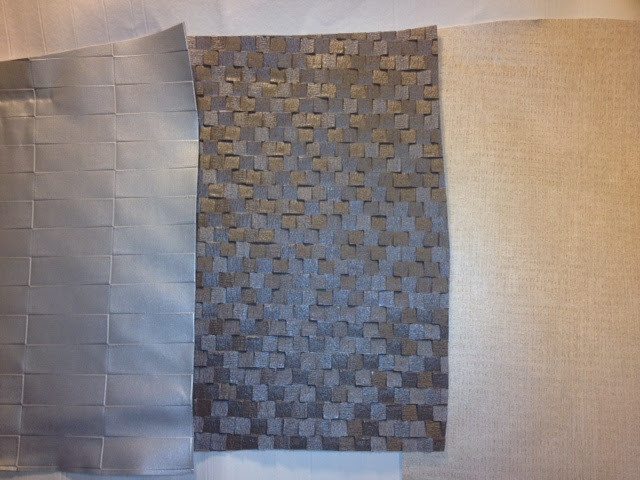 Highly sought after vinyl wall covering is a popular export product from the USA. Usually in assorted designs, styles and colors on rolls, 54-60″ Wide. Vinyl Wall Covering is also known as PVC Wall Covering or Textile Backed Wall Covering. Keep in mind this is not Wallpaper. Wallpaper is typically a thinner material with less strength and uses than Vinyl Wall Covering. If you would like some samples please contact us we have containers of vinyl wall covering for export from the USA.
Highly sought after vinyl wall covering is a popular export product from the USA. Usually in assorted designs, styles and colors on rolls, 54-60″ Wide. Vinyl Wall Covering is also known as PVC Wall Covering or Textile Backed Wall Covering. Keep in mind this is not Wallpaper. Wallpaper is typically a thinner material with less strength and uses than Vinyl Wall Covering. If you would like some samples please contact us we have containers of vinyl wall covering for export from the USA.
Primary applications of Vinyl Wall Covering
What is it used for? Vinyl Wall Covering has many uses throughout the world. But let’s start at the beginning and its primary use. It is primarily for the decoration and protection of partitions and interior walls. It has very practical qualities and a great look that make it suitable for use anywhere. It can be used in any type of building and in any country in the world. But it is particularly well-suited to bathrooms, kitchens and other moisture-prone areas because it is waterproof. It almost always comes on rolls of standard widths ranging from 54 to 60 inches. There are literally thousands of styles. It is literally an art form that designers have used as a palate to test designs that will dot the walls of anywhere from a Starbucks in Seattle to a night club in Rio De Janeiro. It contains colors, motifs and textures which allow it to blend in with any building decor.
Alternate applications for Vinyl Wall Covering
PVC Wall Coverings have many uses outside of its primary use as a wall covering. This is what makes it so useful and valuable on the world market. WorldWiseUSA exports Vinyl Wall Coverings throughout the world where it’s in high demand for it’s versatility, multi-dimensional, high quality, and strength which in turn castes a wide net bringing in customers from many industries. Here is a list of alternative uses for Vinyl and PVC wall covering that have already been applied throughout the world.
- Bags, purses and wallets.
- Arts and crafts. For example temporary or permanent art installations as well as greeting
- Binders, book covers, and folders
- Drawer liners, dividers, storage bins and other office uses.
- Creating designs to go on furniture. Containing but not limited to coffee tables, book
- Shelves and cabinets.
- Overall thickness will affect the thermal and acoustic insulating qualities of the covering. The
- thickness of the wear layer will determine durability, sturdiness and maintenance requirements.
- Waterproof and washable
- Quick and easy installation
- Multi-dimensional
When working with Vinyl Wall Covering
- Apply vinyl wall covering from the same run, batch, or manufacturer in the same area when possible.
- Make sure it is completely adhered, smooth, clean, without wrinkles and air pockets.
- Extend vinyl wall covering continuously behind non-built-in casework and other items which are close to but not bolted to or touching the walls.
- Install vinyl wall covering with a resilient base and don’t extend the wall covering more than 6 mm (1/4 inch) below top of resilient base.
- To make sure the color, pattern, and adherement are the same, install panels consecutively in order in which they are cut from the roll including filling spaces above and below windows, doors, and other penetrations.
- Do not install horizontal seams in wall covering rolls.
- Reverse alternate strips to hang fabric expect on matched patterns, or as recommended by the manufacturer.
Directions on how to apply Vinyl Wall Covering
- Cut vinyl wall covering on a work table with a straight edge.
- Do not use joints or seams that are not cut clean.
- Trim additional selvage to achieve a color and pattern match at seams. Overlap seams
- Avoid double cutting on the wall.
- Do not cut into wall surface when cutting the vinyl on the wall.
- After cutting, remove strip and excess adhesive from seam before proceeding to next
- Smooth down seam in adhesive for tight bond and joint.:
- For inside corners wrap vinyl wall covering around corner.
- Do not seam very close or within 50 mm (2 inches) of inside corners.
- Double cut inside and outside corners.
- Wrap wall covering around inside corner and don’t seam within 150 mm (6 inches) of outside corners.
If your interested in pricing, more information, or to make a purchase please contact us.
Leave a Reply